Rare historic photos reveal what America's Gilded Age was really like
The tale of an era
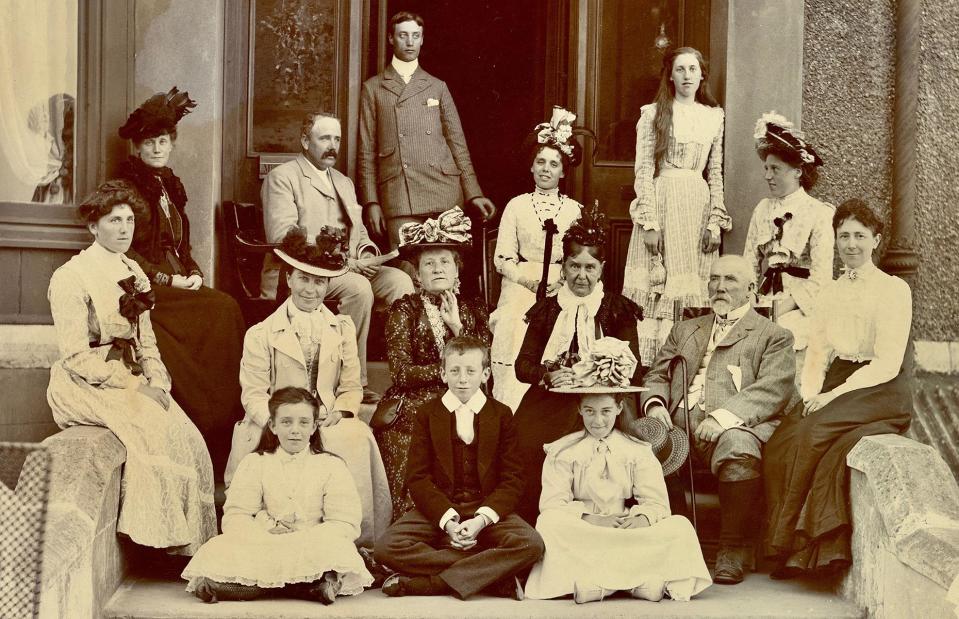
Photo Recall/Alamy
Railroad barons, gargantuan East Coast mansions and elaborate galas are all synonymous with the Gilded Age – a period of US history after the Civil War that saw rapid industrial development and a widening gulf between the classes. TV shows like HBO's The Gilded Age have enraptured audiences with the splendour of the era. But there's more to the period than parties and palaces.
Read on to see extraordinary black-and-white photos that bring America's Gilded Age to life...
1870s: An early Standard Oil Company tank wagon

Bettmann/Getty Images
Parties and pleasure-seekers might be what comes to mind when you think of the Gilded Age – but ultimately it was an era defined by industry. After the Civil War (1861-1865) the northeast experienced an economic boom thanks to everything from steel and oil to the burgeoning railroad. A leading business was the Standard Oil Company, founded in 1870, right at the start of the era. Pictured here is an early Standard Oil tank wagon.
1870s: Cornelius Vanderbilt and the Gilded Age dynasties
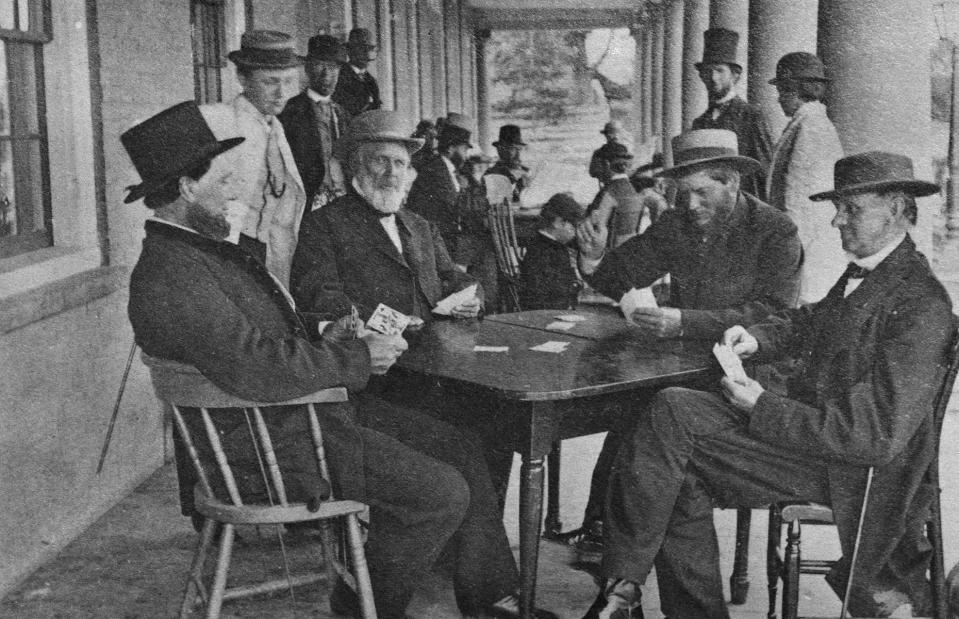
Archive Photos/Getty Images
The age became defined not just by industries, but by a series of dynastic families. Among them were the Vanderbilts, with patriarch Cornelius Vanderbilt (1794-1877) taking a leading role in the development of America's railroad system and shipping industry. He's photographed here in New York's Saratoga Springs indulging in a card game with fellow businessmen.
1870s: Mark Twain dubs the era 'The Gilded Age'
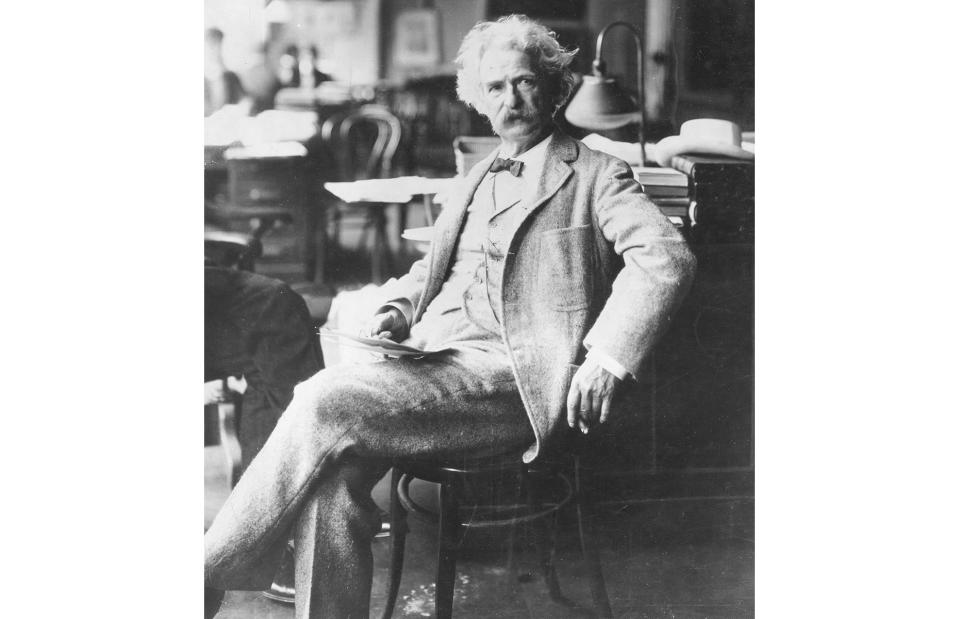
PhotoQuest/Getty Images
The term 'Gilded Age' – an apt label for this era associated with opulence and abundance – was coined by the writer Mark Twain (born Samuel Langhorne Clemens, pictured). He penned the term in his 1873 book The Gilded Age: A Tale of Today. Written in conjunction with fellow writer Charles Dudley Warner, the novel was fiercely satirical, with scathing depictions of corrupt politicians and wealthy dignitaries.
1870s: The rise of John D Rockefeller
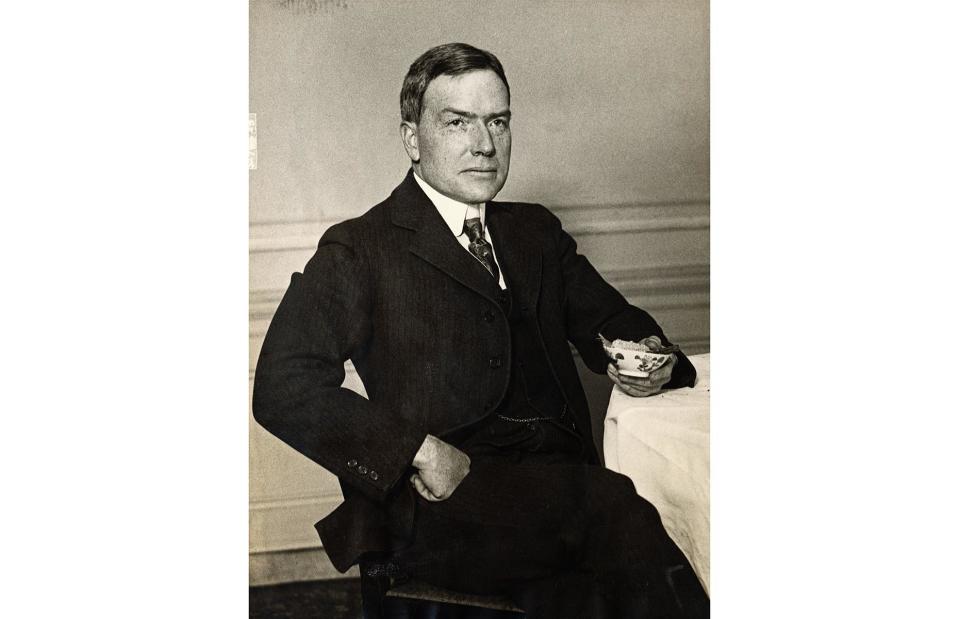
George Rinhart/Corbis via Getty Images
John Davidson Rockefeller (1839-1937) was another force of the Gilded Age. Rockefeller's business was primarily oil: he co-founded the Standard Oil Company, which reportedly made him the world's first ever billionaire. Loathed and admired in equal measure, Rockefeller was a predatory businessman and ruthless operator who nevertheless donated vast sums to charity. In this photo Rockefeller is at the height of his powers in a classic three-piece suit.
1870s: The rise of Andrew Carnegie
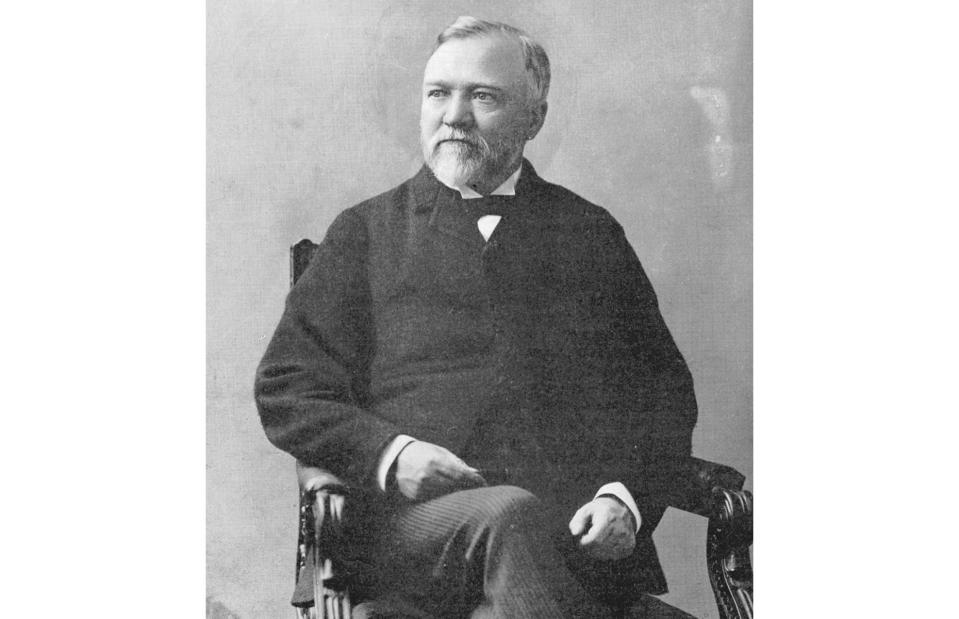
Ann Ronan Pictures/Print Collector/Getty Images
Another of the era's defining figures was Andrew Carnegie – who is now best known for donating funds that helped build public libraries all over the world. Originally born in Scotland, Carnegie built his wealth in the steel industry, but went on to donate almost 90% of his fortune to charitable causes during the later years of his life.
1880s: Rockefeller ignores a beggar
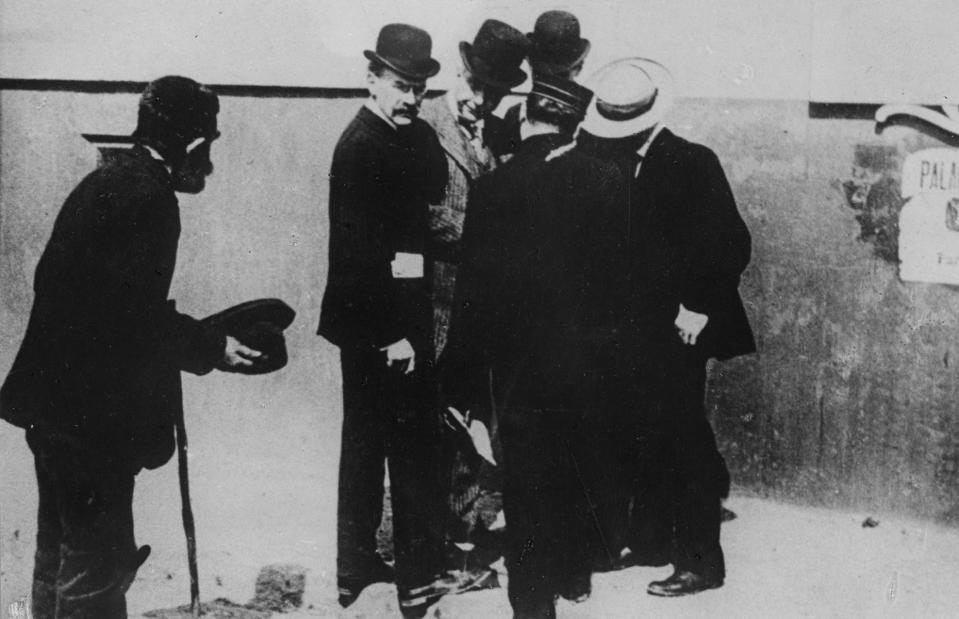
Hulton Archive/Getty Images
Though many of these figures were philanthropic, some of their behaviour drew criticism – particularly when it came to workers' rights and the treatment of the poor in a society ever more divided by class. The moniker 'robber barons' was introduced and used against the magnates perceived to be the most morally corrupt. In this photograph, John D Rockefeller is shown turning his back to a beggar pleading for money, and the picture was later weaponised by Rockefeller's enemies.
1880s: The transcontinental railway powers Gilded Age progress...
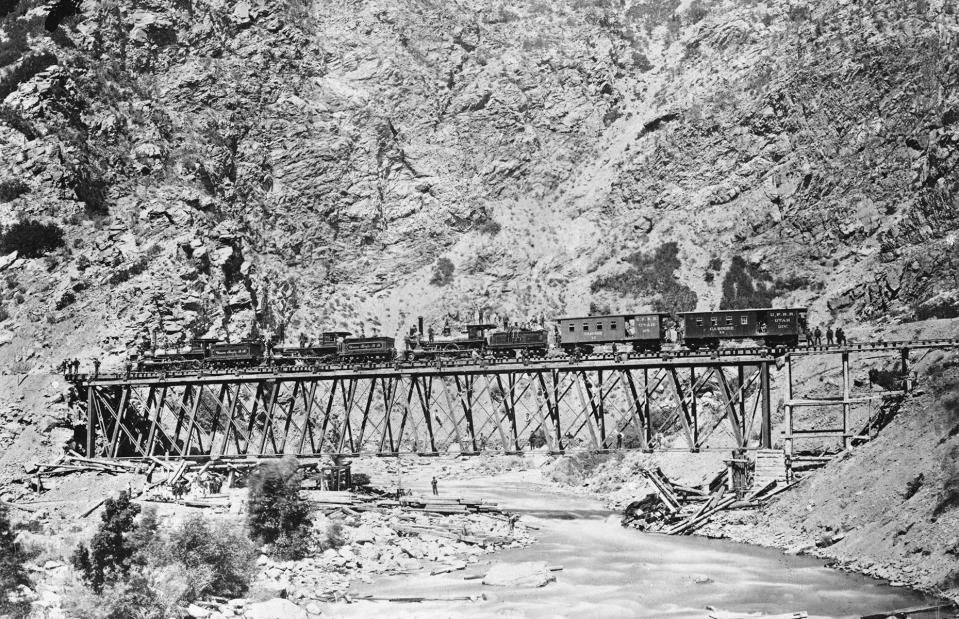
Hulton-Deutsch Collection/CORBIS/Getty Images
The transcontinental railroad – completed in 1869 – was another wealth driver during the Gilded Age, and by the 1880s was in its prime. The railroad joined the east and west coasts for the very first time, fuelling settlement of the American West to the dismay of its Indigenous occupants and driving economic growth across the country. Cornelius Vanderbilt was one of several magnates to owe much of his fortune to the railroad. This photograph shows a part of the railroad in Utah around the time construction was finished.
1880s: ...but it came at a cost
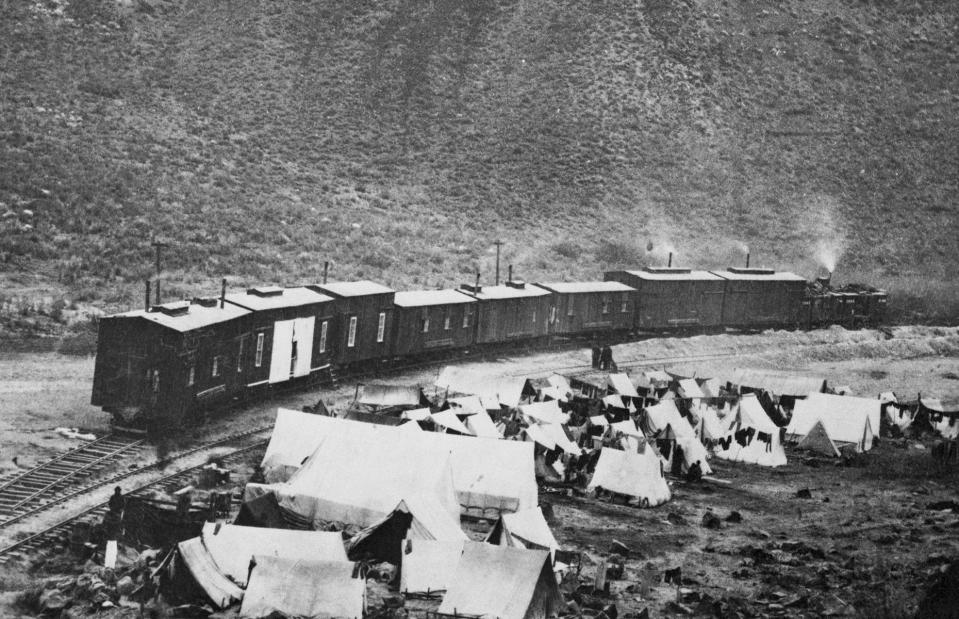
Bettmann/Getty Images
For all the opulence and wealth that the completion of the railroad brought some members of society, it brought hardship to many more. The labour force for the transcontinental railroad included thousands of Chinese migrant workers, who lived in makeshift camps like the one in this picture. Conditions were often dangerous, treatment was harsh and the pay was often dreadfully low. When the railroad was finished many of these labourers tried to find work in California, where they often faced prejudice and exclusion.
1890s: The Breakers becomes one of the most lavish Gilded Age mansions
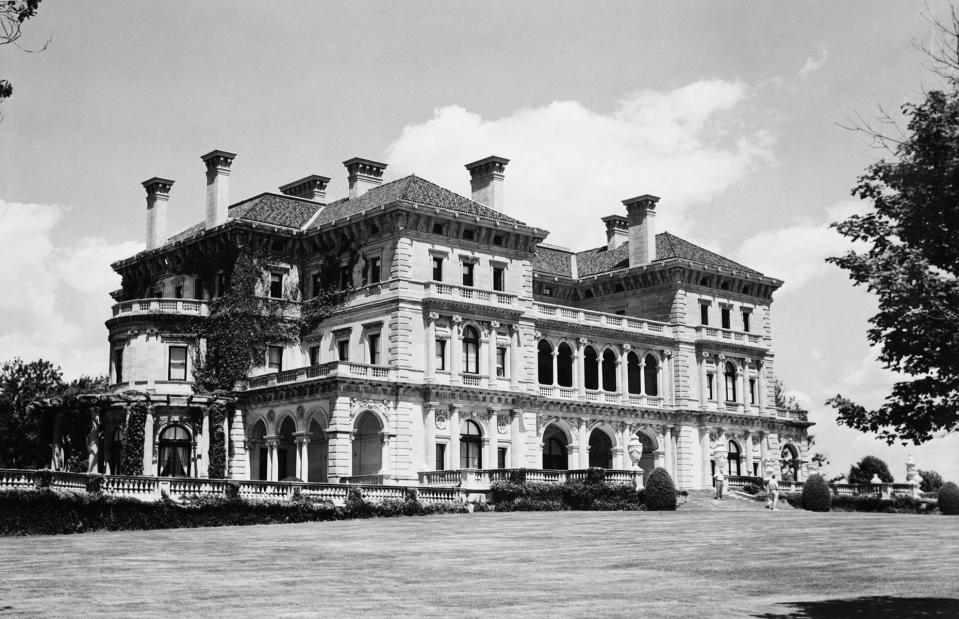
Bettmann/Getty Images
The most defining symbols of the Gilded Age are the titanic mansions that sprang up on the East Coast. In the coastal state of Rhode Island, they were known as summer homes or 'cottages', where wealthy barons and their families could escape from the hustle of cities such as New York. Pictured here is the Breakers in Rhode Island's Newport, built for Cornelius Vanderbilt II between 1893 and 1895.
1890s: The extremely extravagant Breakers Great Hall
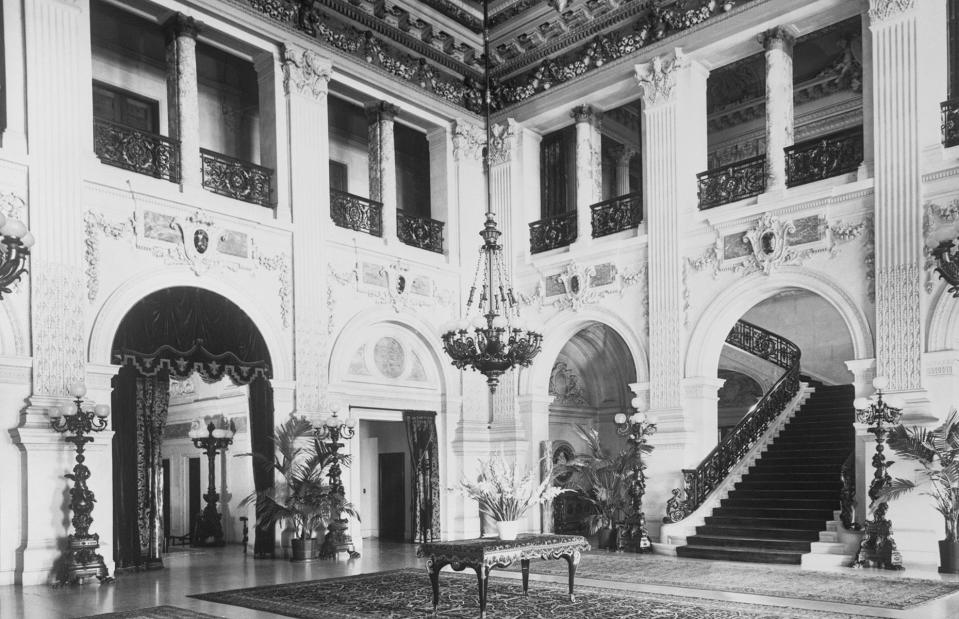
Bettmann/Getty Images
In classic Gilded Age fashion, the luxurious Breakers mansion – built in the Italian Renaissance style – was complete with an opulent Great Hall (pictured). This later photograph shows moulded ceilings, columns, chandeliers and antique furniture – all tell-tale signs of the great wealth of the Vanderbilt family and the attention to detail that went into creating one of the era's finest 'summer cottages'.
1890s: Anne Harriman Vanderbilt and Grace Vanderbilt display the era's fashions
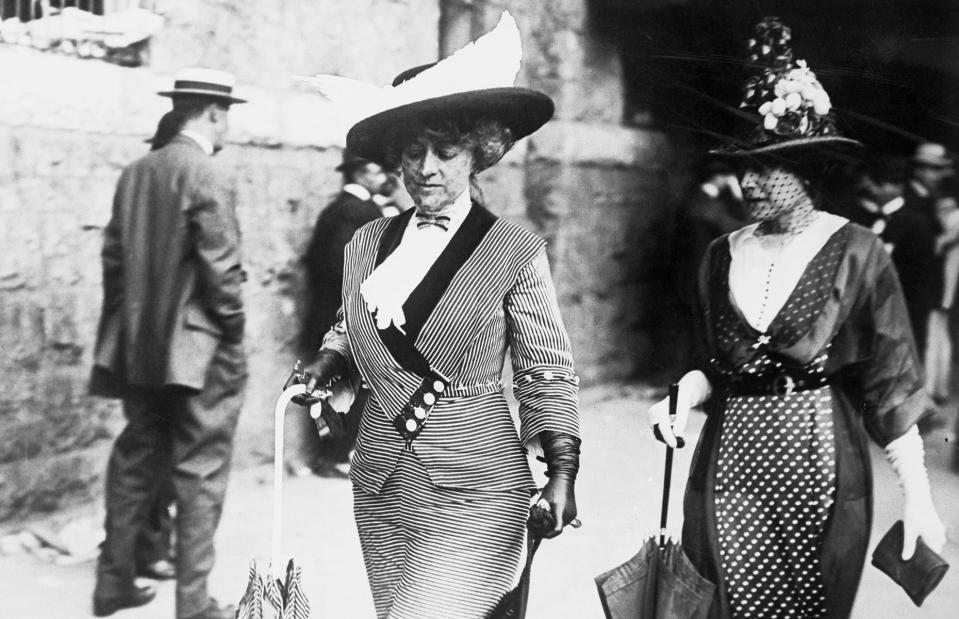
Bettmann/Getty Images
Of course, fashion was also typically used as a display of wealth during this era. Plumed hats and bustles became commonplace for women in the upper echelons of society, and fine textiles such as lace and silk were abundant too. Pictured here are Grace Vanderbilt (left), wife of Cornelius Vanderbilt III; and Anne Harriman Vanderbilt (right), wife of William Kissam Vanderbilt, walking the streets of New York City in the early 1890s.
1890s: The sumptuous Biltmore Estate
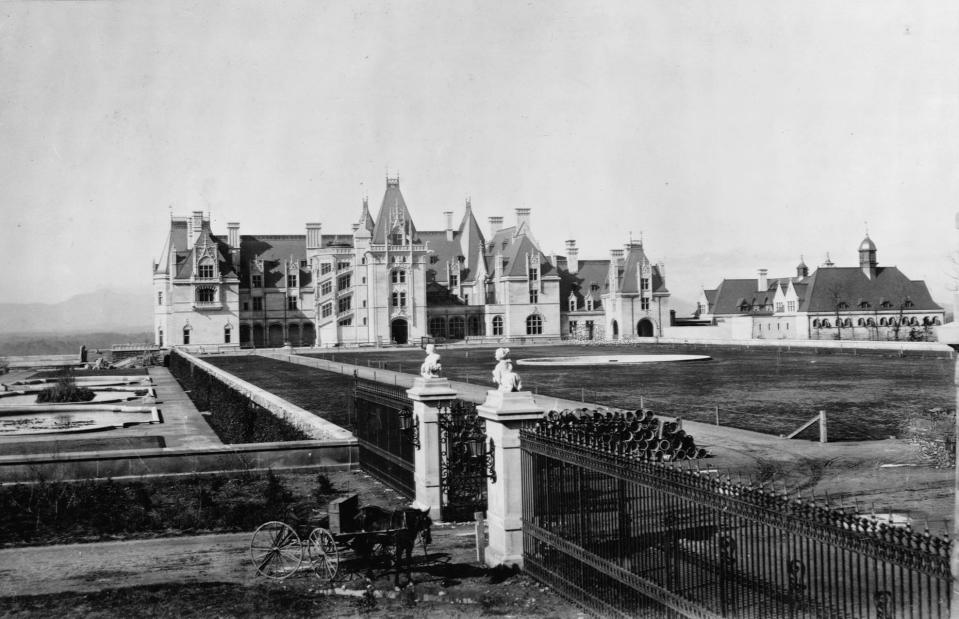
Library of Congress/Corbis/VCG/Getty Images
Another of the Vanderbilts' lavish residences was built in Asheville, North Carolina, in the Blue Ridge Mountains. This one was commissioned by George Washington Vanderbilt II and built between 1889 and 1895. It sprawls across 175,000 square feet (16,258sqm) and includes 35 bedrooms, 43 bathrooms and some 65 fireplaces. Today it's known as 'America's largest home'.
1890s: The opulent Biltmore Library
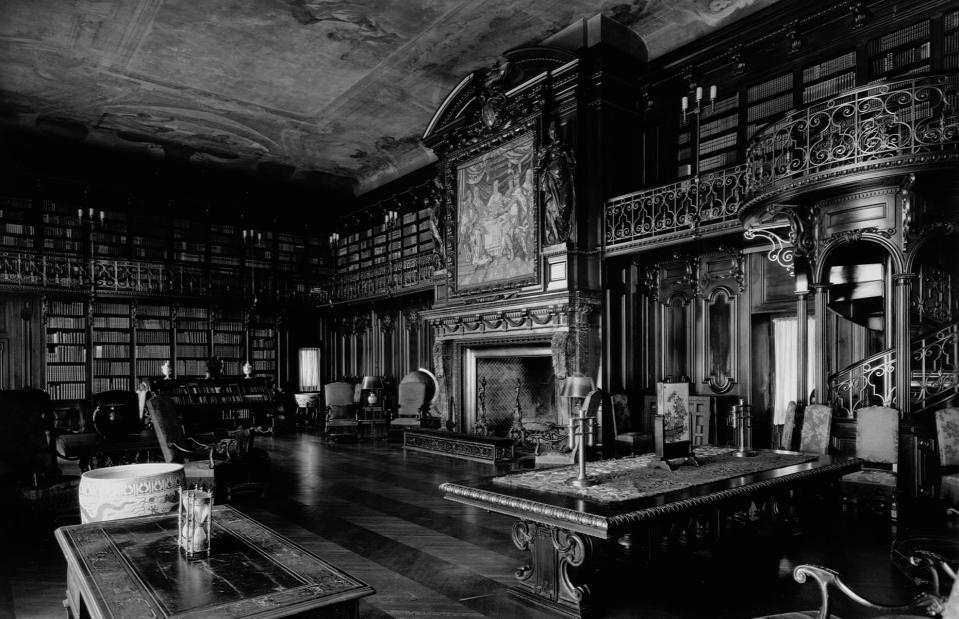
Library of Congress/Corbis/VCG/Getty Images
There are endless rooms to get lost in at the Biltmore, which is open today for public tours. The ornate library still manages to stand out – George Vanderbilt was an avid reader and it's thought that he collected more than 23,000 books during his lifetime. A selection of these precious tomes are still on display in the library, whose intricate ironwork, large fireplace and period art are also well worth seeing.
1890s: The Newport mansion of Marble House
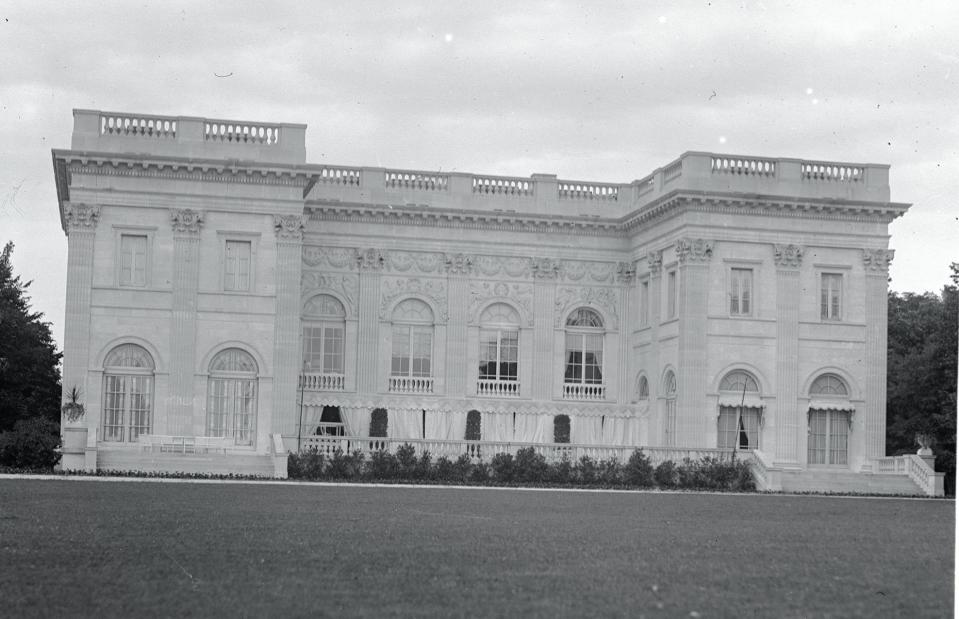
Bettmann/Getty Images
Alongside the Breakers, the grand Marble House is another of Newport's still-standing Gilded Age mansions. It was commissioned by William Vanderbilt as an extravagant birthday gift for his wife Alva and was constructed between 1888 and 1892. Alva was a leading hostess and filled the mansion with world art befitting such a sumptuous space. It was designed by the architect Richard Morris Hunt and inspired by the Palace of Versailles.
1890s: New York's tenement blocks were tough places to live...
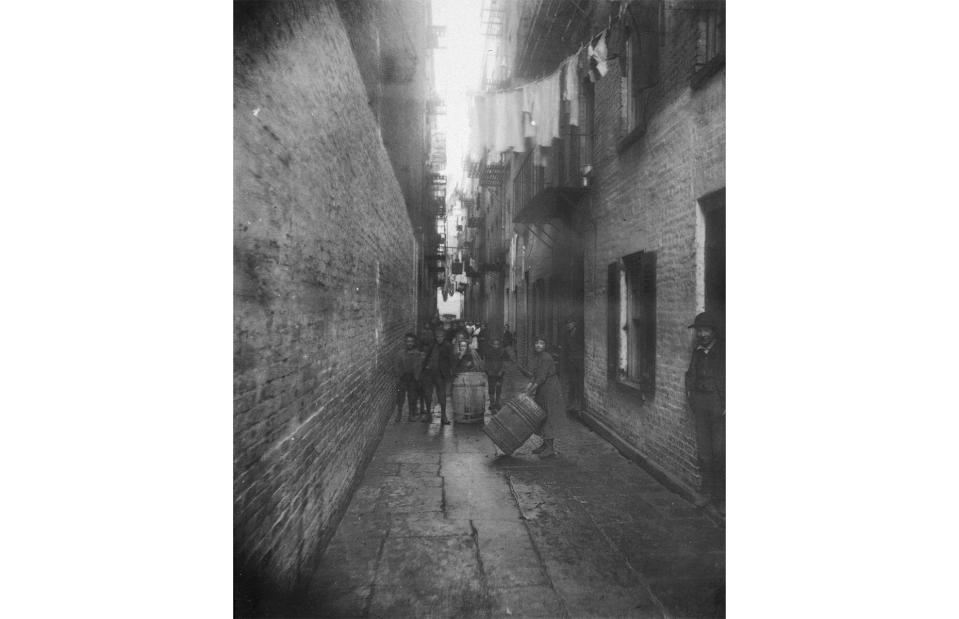
Jacob A. Riis/Museum of the City of New York/Getty Images
As the rich got richer, the gulf between the most affluent members of society and America's poorest citizens got wider. There was also mass migration to urban hubs like New York and Philadelphia during this period and many people lived in very poor quality housing. Here, children gather in an alleyway between New York tenement buildings – cheap, high-rise blocks that became crammed with low-income families living in squalid conditions.
1890s: ...and families had to work extremely hard to get by
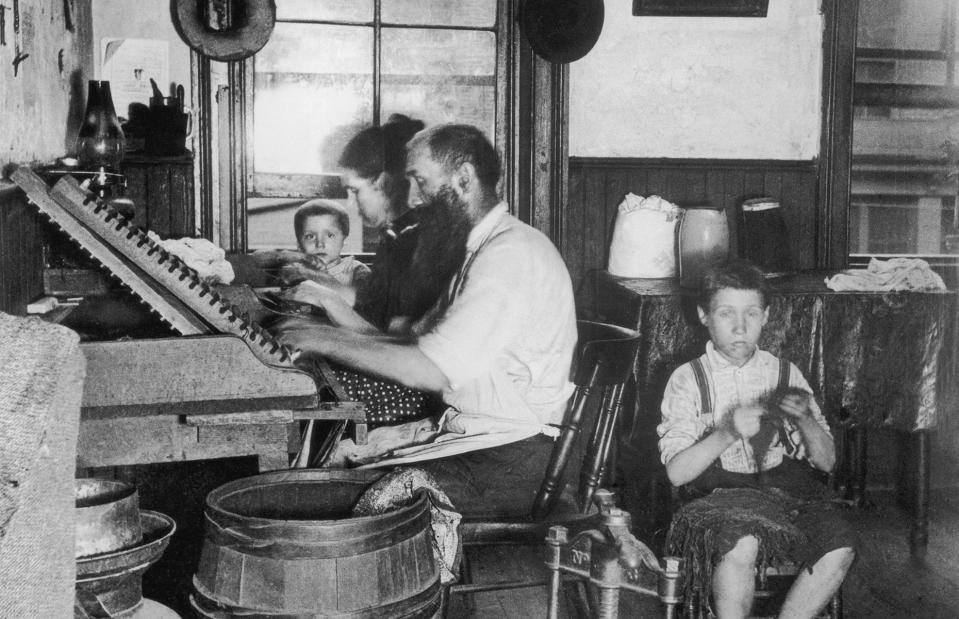
Jacob A. Riis/Museum of the City of New York/Getty Images
It wasn't uncommon for poorer families to work in the same places that they lived. From this tenement building in New York's Lower East Side, a young family of four is busy making cigars. Long days would be common, and this family would work from six in the morning to nine at night, earning just a few dollars for every thousand cigars.
1890s: The Pullman Strike
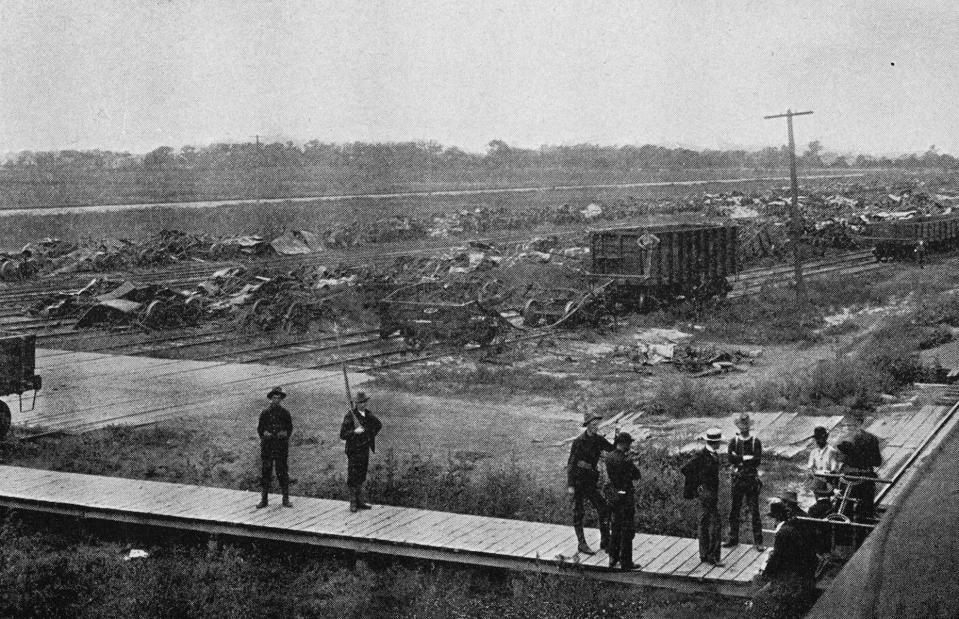
Kean Collection/Archive Photos/Getty Images
As societal divides increased, labour unions strengthened and industrial action became more common. This dramatic photograph depicts burned freight and coal cars during the Pullman Strike of July 1894 – a strike by railroad workers protesting brutal pay cuts at the Pullman Palace Car Company, a manufacturer of railroad carriages. The strike ground rail traffic to a halt across the country and on 7 July, national guardsmen fired into a crowd in Chicago, killing between 4 and 30 people.
1890s: 'Muckrakers' document the Gilded Age
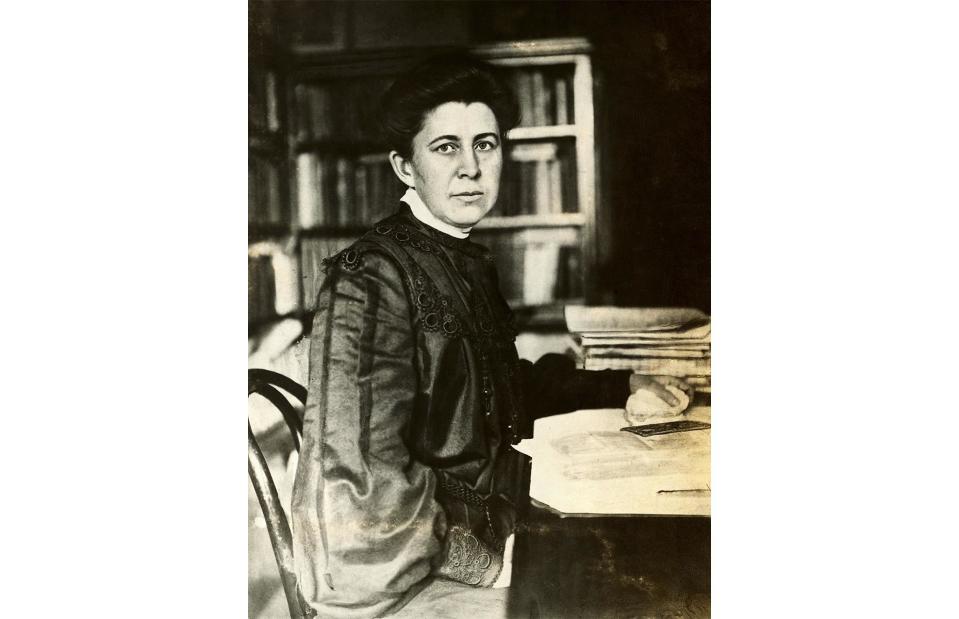
George Rinhart/Corbis/Getty Images
The late 19th century also saw the rise of so-called 'muckrakers'. These were investigative journalists and reporters who worked to expose the political and financial corruptions of the most influential Gilded Age figures, and also shone a light on the living conditions of the poor. This undated photo depicts Ida Tarbell, who became renowned for her work in this field – particularly her 1904 book The History of the Standard Oil Company, which laid bare the company's questionable business strategies.
1900s: 'Muckrakers' document the Gilded Age
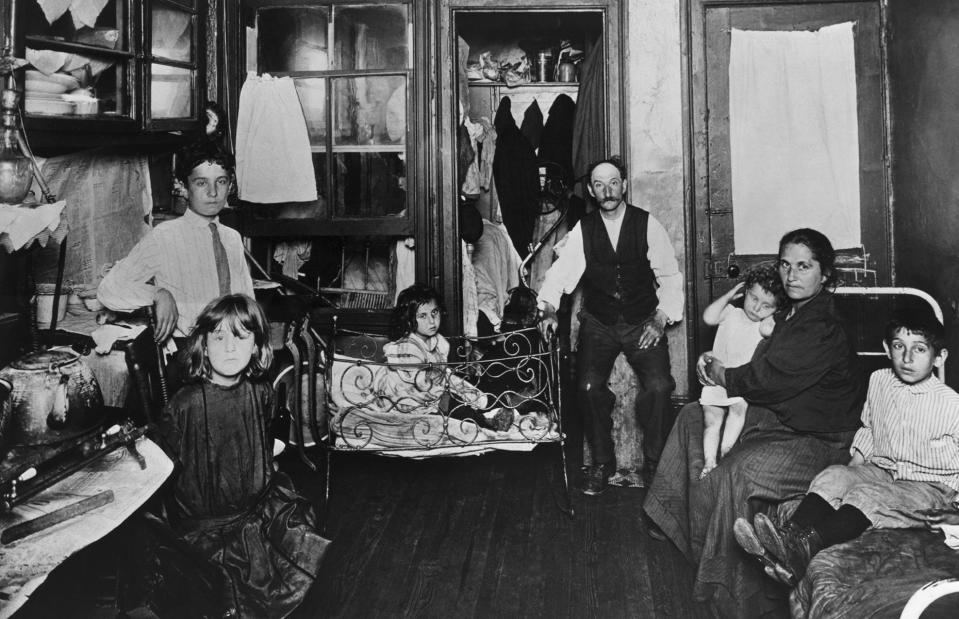
Bettmann/Getty Images
Another prominent journalist in this field was Danish-American Jacob August Riis. Riis was predominantly a photographer, who mainly pictured the lives of those living below the breadline in an attempt to galvanise the middle and upper classes. This is one of his photographs: taken around 1910, it depicts a large family living in a tiny tenement flat in New York.
1900s: Finely dressed families still dominate our image of the age
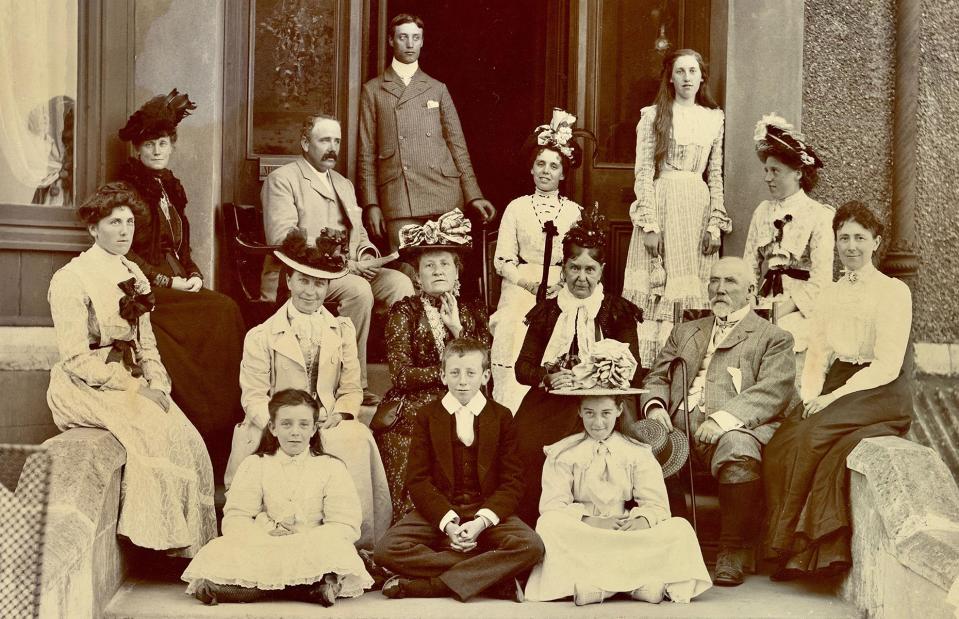
Photo Recall/Alamy
Still, the abject poverty that many endured during the Gilded Age is often forgotten in modern depictions. Images such as this one, which was taken in the early 1900s, remain dominant – a large and wealthy family dressed in fine and expensive clothing gather on the porch of what appears to be a large mansion.
1900s: The Vanderbilt Horse Show
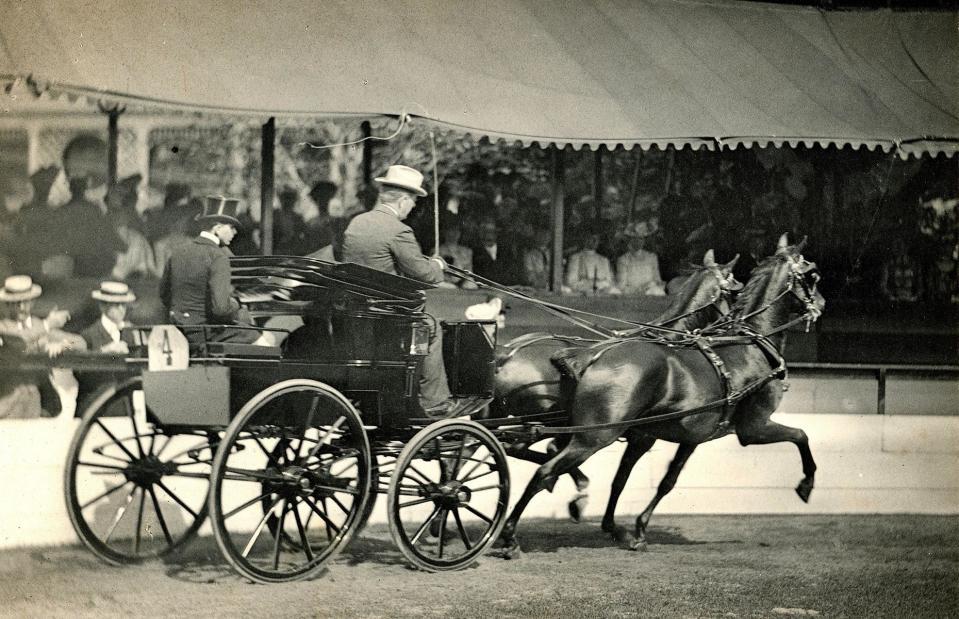
Photo Recall/Alamy
Extravagant demonstrations of wealth, horse shows were very popular during the Gilded Age. Finely dressed crowds would gather to watch as beautiful horses pulled carriages through arenas, or performed equestrian stunts. Pictured is a horse show arranged by the Vanderbilts taking place in Newport around the turn of the century.
1900s: Coaching is all the rage
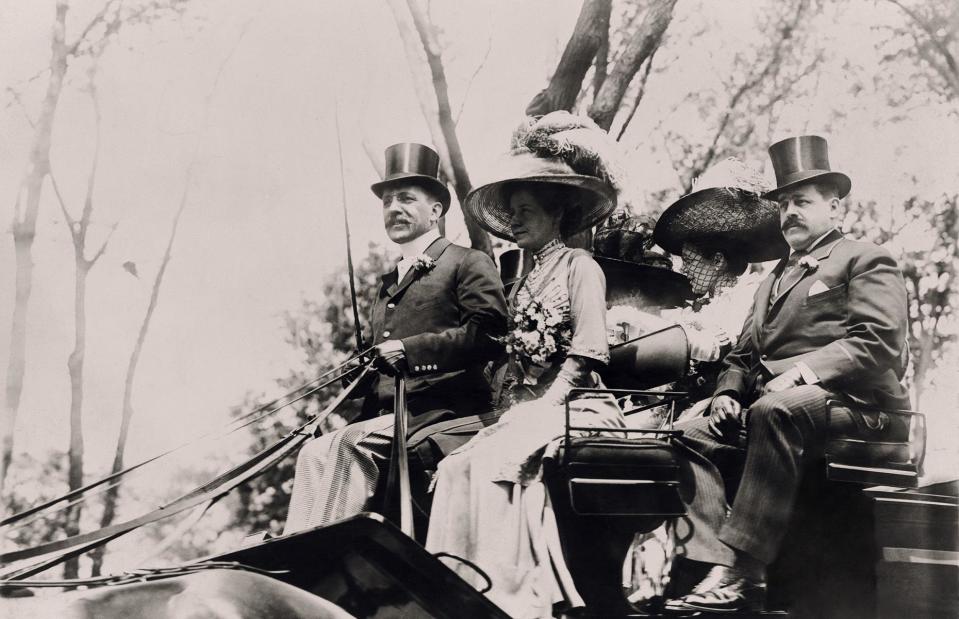
Everett Collection/Shutterstock
So-called 'coaching' – enjoying leisurely horse and carriage rides in lavish dress – was also popular with the upper classes during the Gilded Age, after originally becoming popular in Britain. This photo depicts wealthy banker Harris Charles Fahnestock seated in a carriage with a woman presumed to be his wife, with another equally well-dressed couple behind them. It was taken sometime in the late-19th or early 20th century.
1900s: Upmarket New York during the Gilded Age
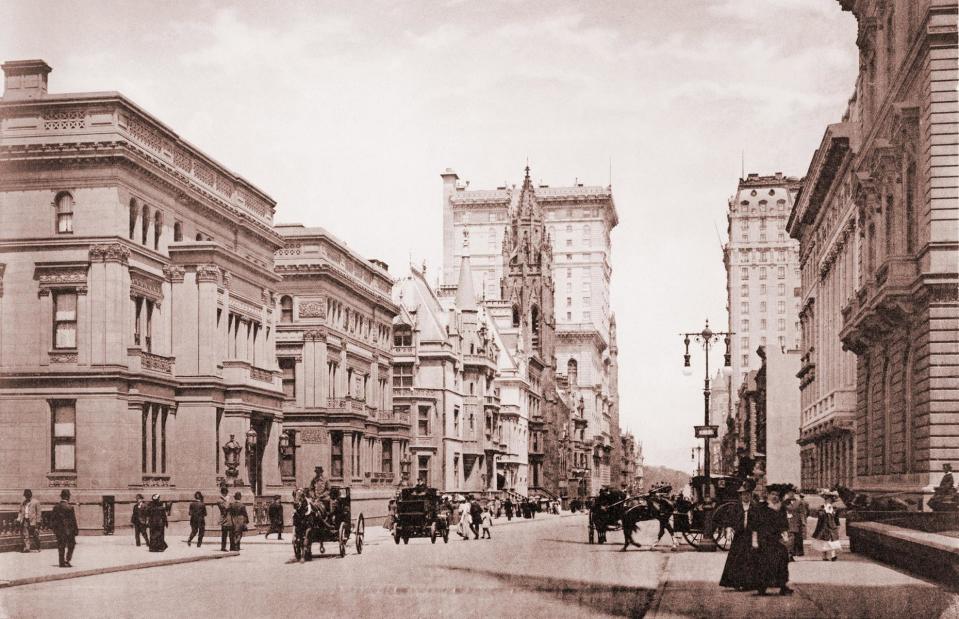
Everett Collection/Shutterstock
This sprawling and elegant New York City boulevard is a far cry from the squalid alleyways captured by Jacob Riis. This turn-of-the-century photograph depicts the ornate St Thomas Church alongside the luxurious Hotel St Regis and the Vanderbilt residences along Fifth Avenue. The tenement blocks were never far away, and New York epitomised the diverging fortunes of the era.
1900s: The Carson Mansion in Eureka, California
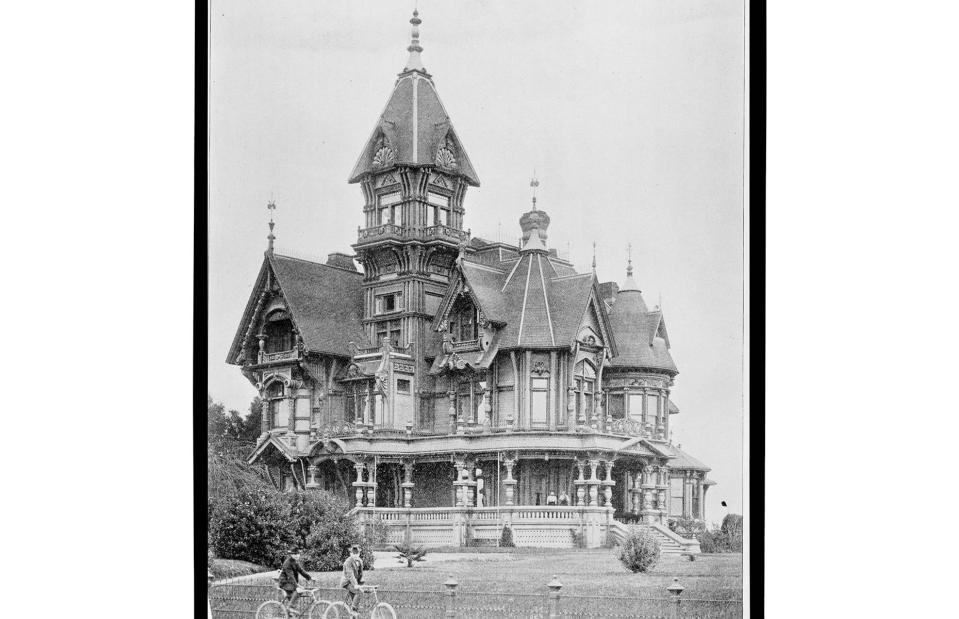
Library of Congress/CC0
The most famous Gilded Age mansions dot America's East Coast, but as railroads connected the country more and more, there were plenty of shows of wealth out west too. This image is of the Carson Mansion in California's Eureka, pictured in 1902. This dramatic home was built in the 1880s in the Queen Anne style (a picturesque style with Renaissance elements and asymmetric facades) and originally belonged to wealthy lumber baron William Carson.
1900s: Finely-dressed travellers take to the rails
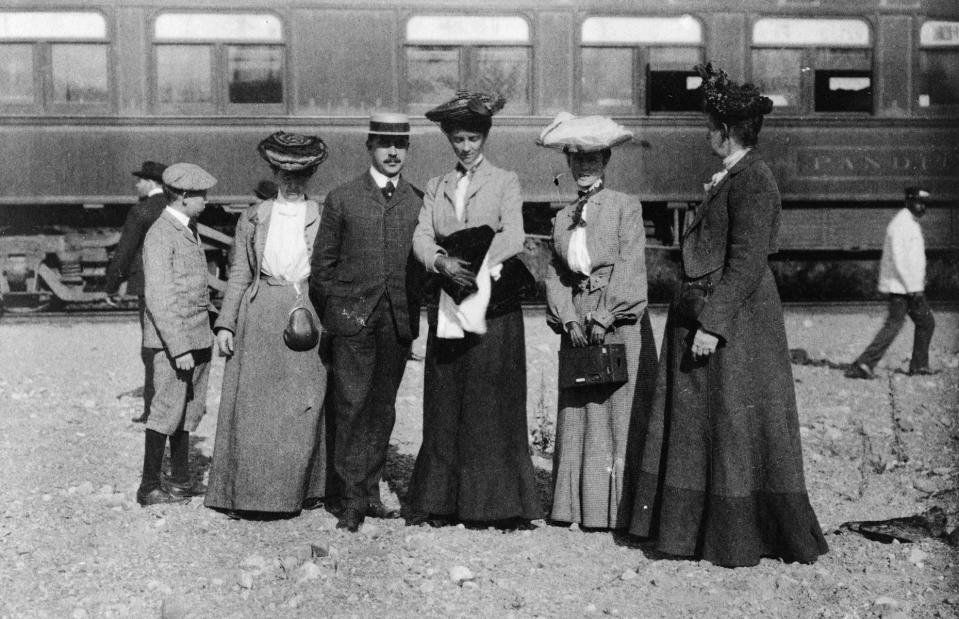
Heritage Art/Heritage Images via Getty Images
Not only did the development of the railroads make people rich – it also allowed those rich people to take long trips on the tracks. An elaborately dressed group of travellers stand before a Pullman railcar in Denver, Colorado in this early shot, taken around 1903. The Pullman Company became well-known for its Pullman porters: most were African-American (some formerly enslaved) and were typically subjected to long hours for low pay. These porters would go on to found the first all-Black labour union in 1925.
1900s: Mark Twain's birthday dinner
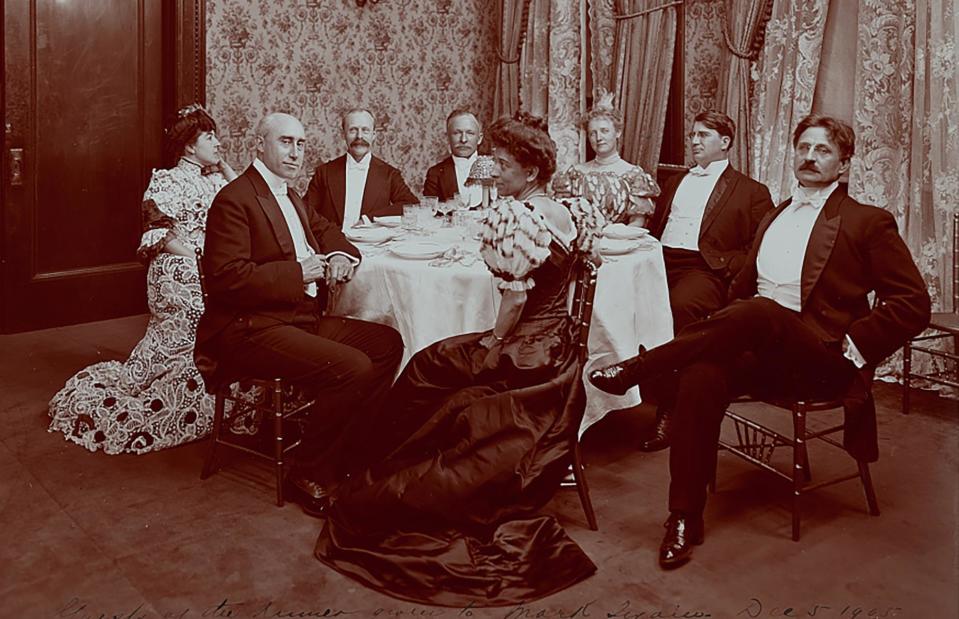
Library of Congress/CC0
While figures like writer Mark Twain – co-author of The Gilded Age: A Tale of Today – were critics of the extravagant era, they were also active participants in it. Here, well-dressed guests gather in a well-appointed dining room to enjoy a fine meal at Delmonico's in New York to celebrate the writer's birthday in 1905. Large social banquets lasting hours were a common fixture of the Gilded Age.
1900s: The lavish Powers Hotel in Rochester, New York
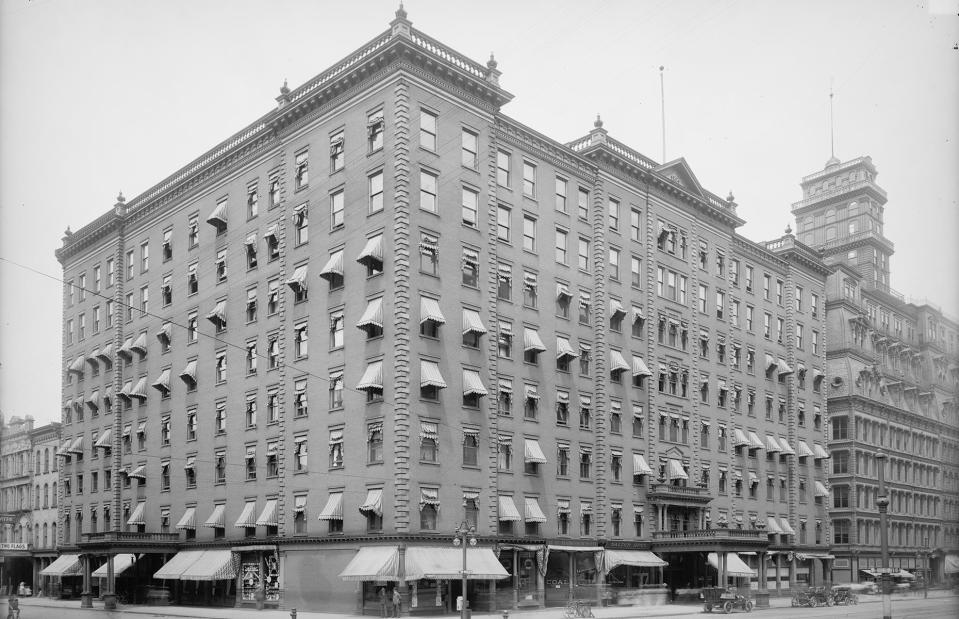
Heritage Art/Heritage Images/Getty Images
Lavish hotels mushroomed across the East Coast towards the end of the 1800s. They served as both boltholes to relax and indulge in, and also as places to conduct business meetings and forge connections. This eight-storey behemoth is the Powers Hotel in Rochester, New York, pictured around 1905. A luxury hotel with a giant 500-seat banqueting hall and four dining rooms, it was a favourite of Mark Twain, Cornelius Vanderbilt and others.
1900s: The sumptuous dining room at Hotel Ponce de Leon
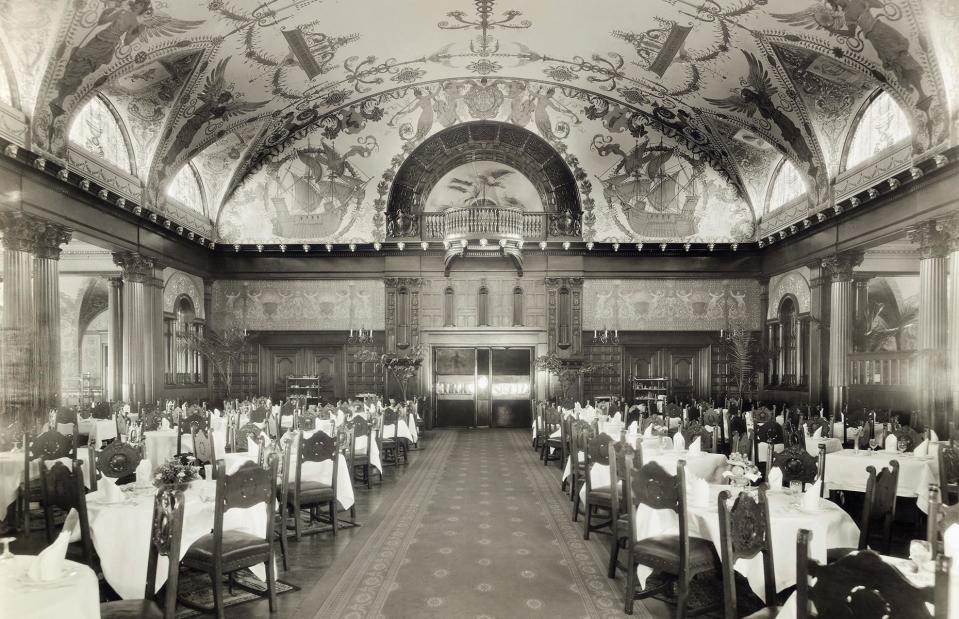
George Rinhart/Getty Images
The Hotel Ponce de Leon in St Augustine, Florida was another of the Gilded Age's most sought-after hotels. Constructed between 1885 and 1887, this one was the brainchild of renowned oil and railroad magnate Henry M Flagler, who intended it to be a winter resort. Pictured here in the early 20th century, it was a lesson in luxury, with grand communal spaces including this cavernous dining room, with its frescoed ceilings and columns.
Now discover fascinating photographs of America during the Roaring Twenties


